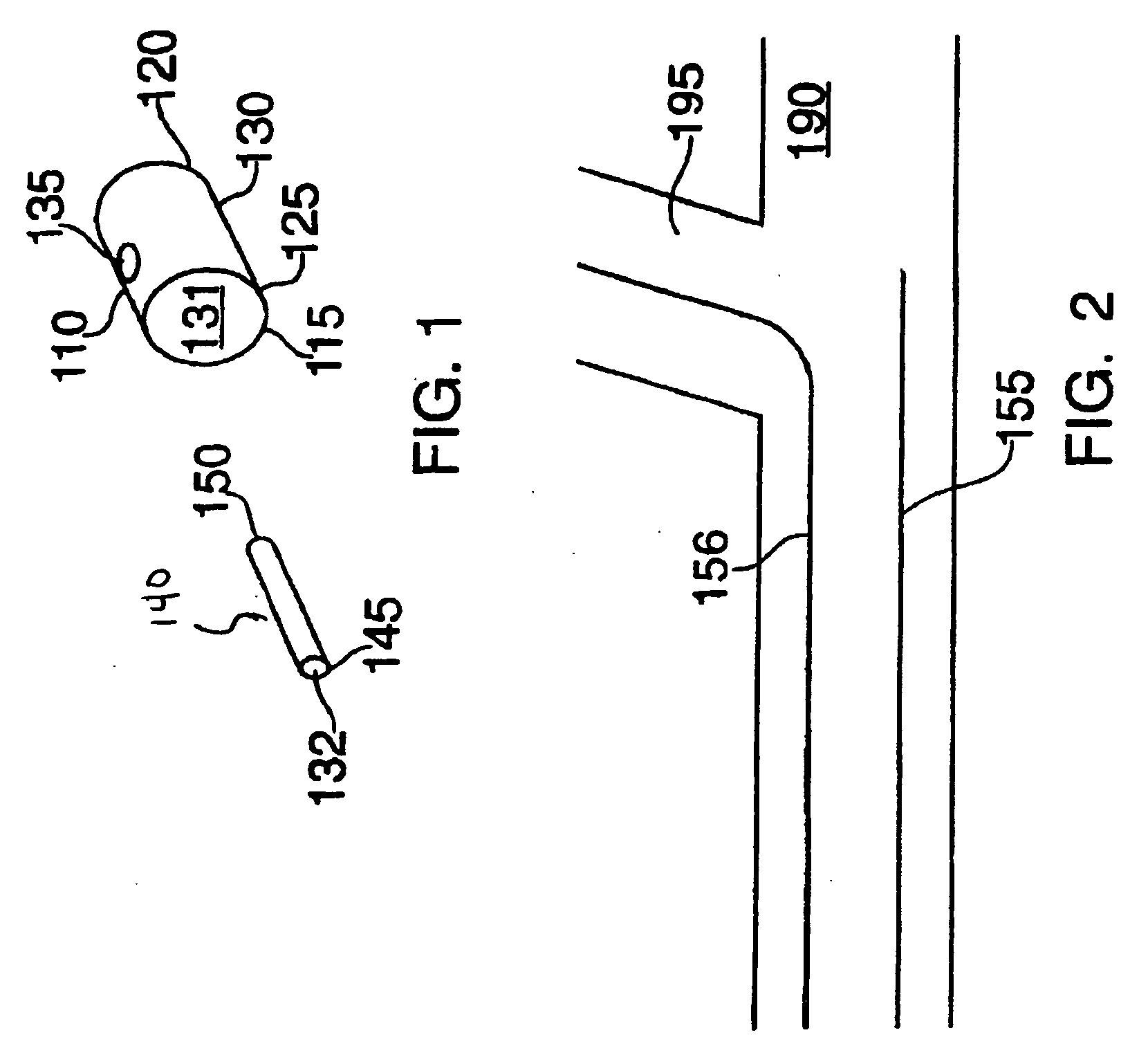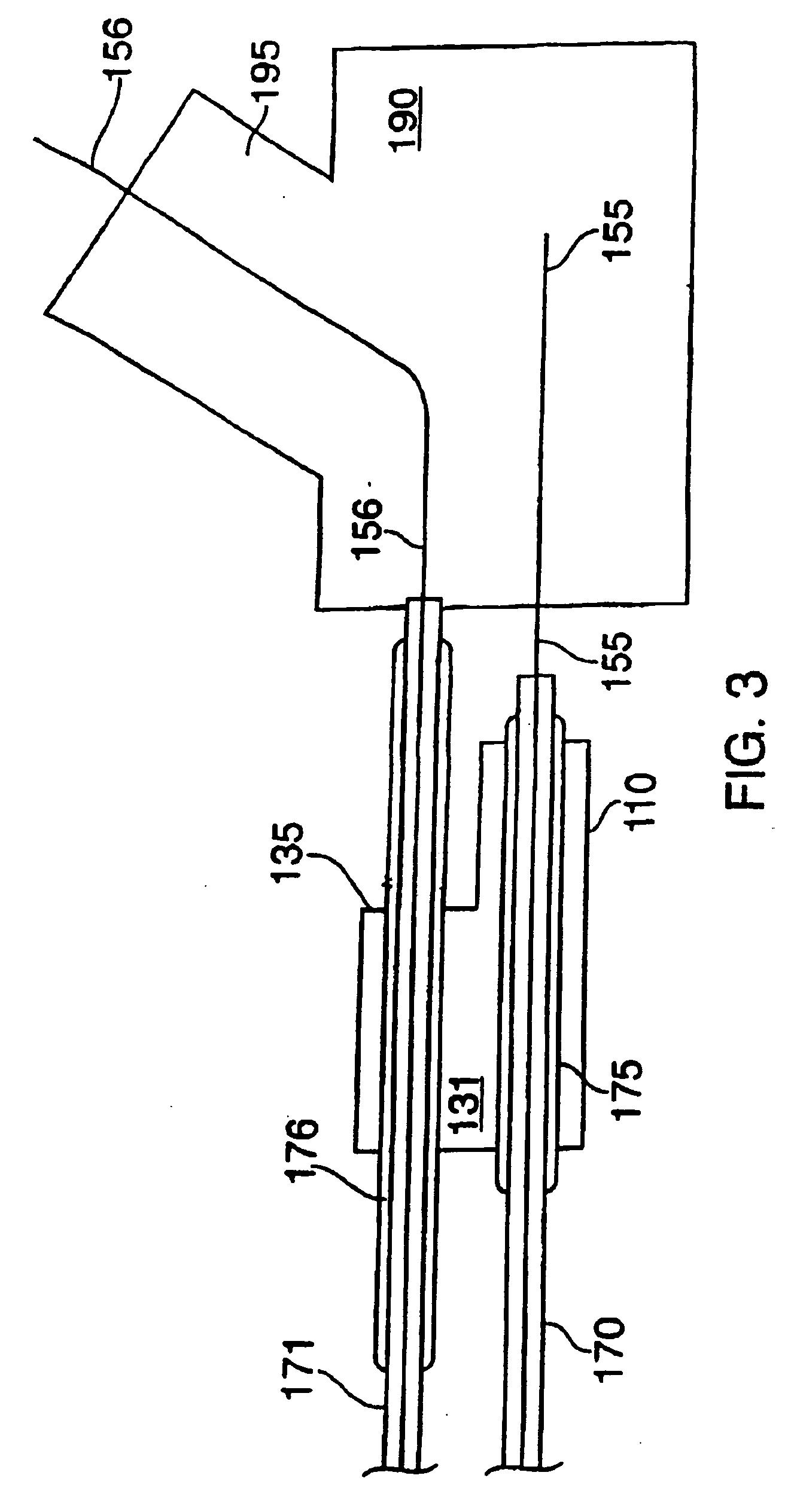System and method for delivering a bifurcated stent
- Summary
- Abstract
- Description
- Claims
- Application Information
AI Technical Summary
Benefits of technology
Problems solved by technology
Method used
Image
Examples
Embodiment Construction
[0029]FIG. 1 is a general representation of one type of a stent with which the present invention may be used. The stent comprises two portions, which are deployed serially in two steps and assembled within the patient to form a bifurcated stent. FIG. 1 shows stem and first leg portion 110 provided with a longitudinal bore 131 and having a proximal end 115 defining a stem portion 125 and a distal end 120. Second leg portion 140 is provided with a longitudinal bore 132 and has a proximal end 145 and a distal end 150. Stem and first leg portion 110 and second leg portion 140 may be sized and patterned or etched as previously discussed. A branch aperture 135 is disposed between the proximal end 115 and the distal end 120 of stem and first leg portion 110. The branch aperture 135 is sized to receive second leg portion 140 and is adapted to engage and secure the second leg portion 140 when it has been expanded within the branch aperture 135. Second leg portion 140 is sized and adapted to ...
PUM
 Login to View More
Login to View More Abstract
Description
Claims
Application Information
 Login to View More
Login to View More - R&D
- Intellectual Property
- Life Sciences
- Materials
- Tech Scout
- Unparalleled Data Quality
- Higher Quality Content
- 60% Fewer Hallucinations
Browse by: Latest US Patents, China's latest patents, Technical Efficacy Thesaurus, Application Domain, Technology Topic, Popular Technical Reports.
© 2025 PatSnap. All rights reserved.Legal|Privacy policy|Modern Slavery Act Transparency Statement|Sitemap|About US| Contact US: help@patsnap.com



